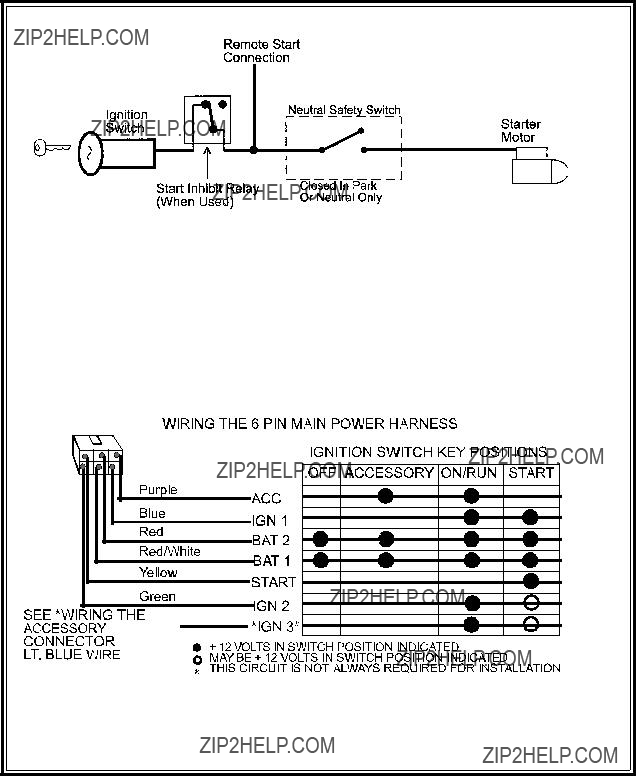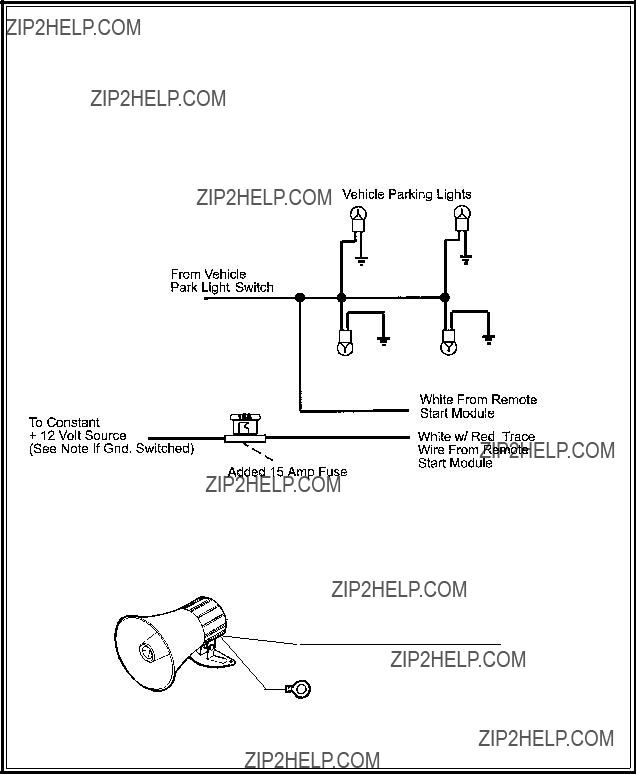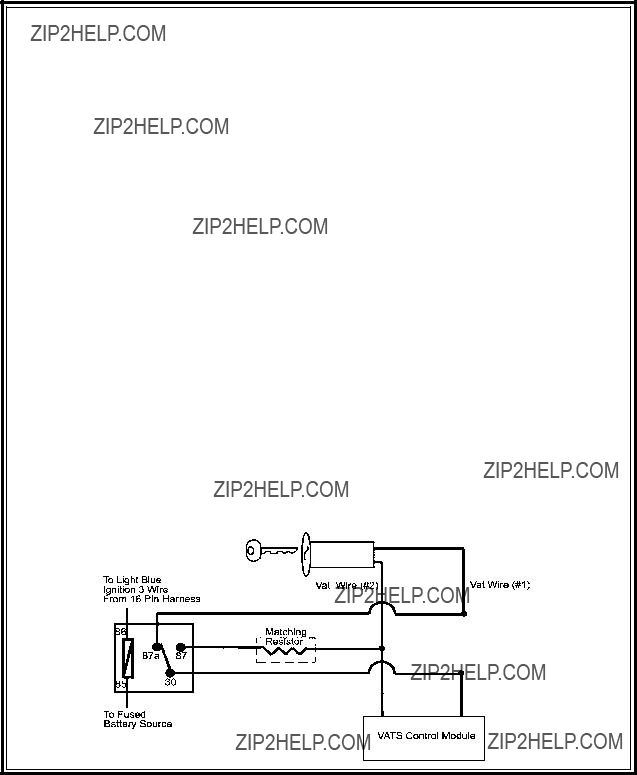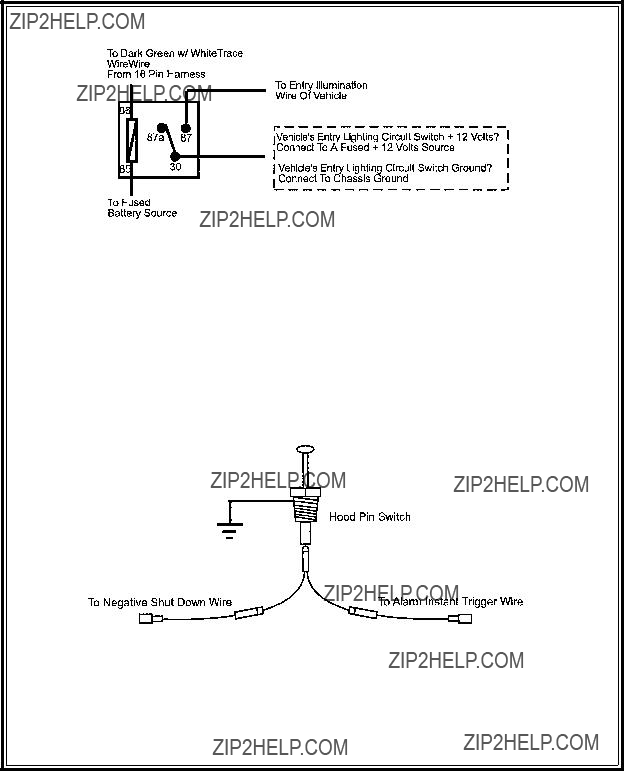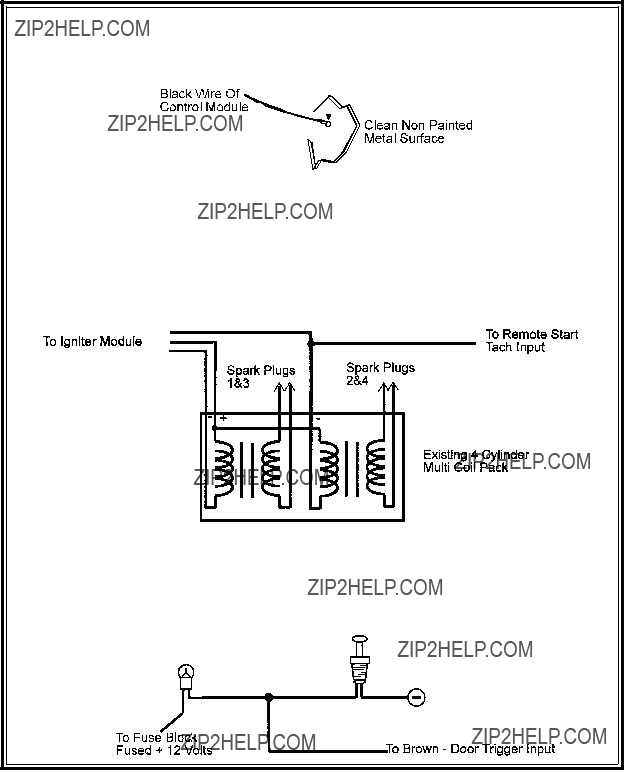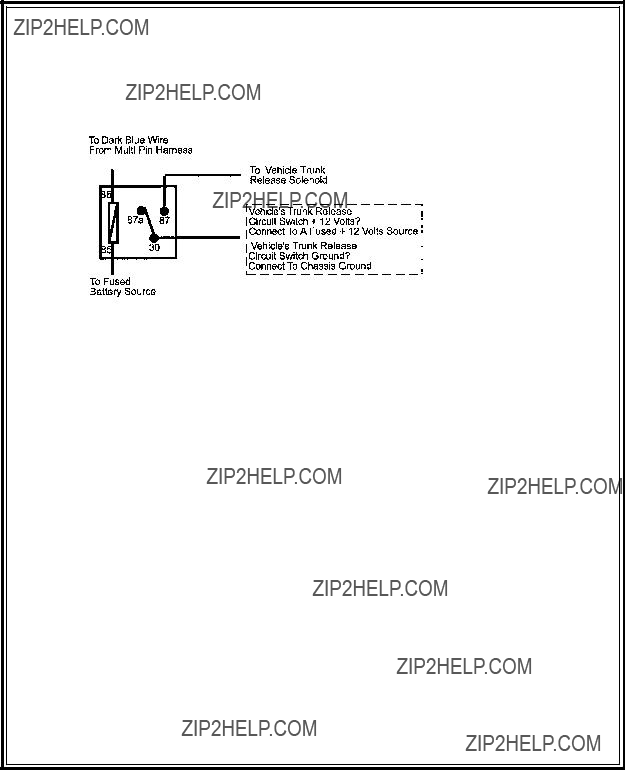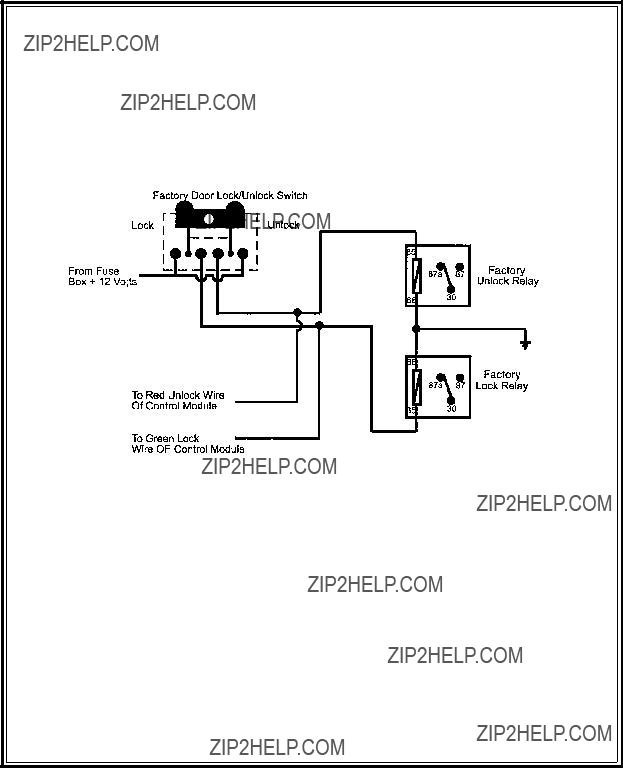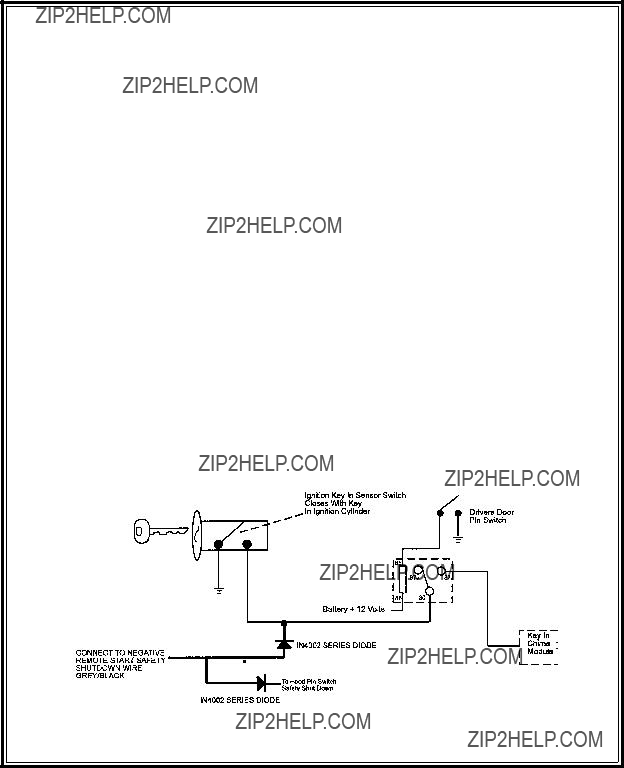TESTING YOUR INSTALLATION:
WARNING !! The following procedure must be performed after the installation of an Audiovox Remote Start Device. It is the responsibility of the installing technician to complete these tests. Failure to test the unit in the following manner may result in personal injury, property damage, or both.
HOOD PIN SAFETY SHUT DOWN:
The intention of the hood pin safety shut down is to prevent the Remote Start unit from being activated while a mechanic or vehicle owner is performing normal routine vehicle maintenance.
To test the integrity of this circuit:
1.With the drivers window in the down position, start the vehicle using the RF transmitter.
2.Reach inside the car and pull the hood release.
3.Raise the hood and confirm that the remote start unit shuts down.
If the unit fails this test, recheck your pin switch connection to the Gray/Black wire of the Audiovox Remote Start Unit.
DO NOT RELEASE THIS VEHICLE TO THE CONSUMER UNTIL YOU CONFIRM THE
OPERATION OF THE HOOD PIN SAFETY SHUT DOWN FEATURE.
MANUAL SHUT DOWN / ENABLE CIRCUIT:
The intent of the manual shut down / enable circuit is to allow the vehicle operator to prevent operation of the Remote Start Unit regardless of the RF transmitter operation.
To test the integrity of the manual shut down / enable circuit:
1.Place the control switch in the on (Closed To Ground) position.
2.Start the vehicle using the RF transmitter.
3.The vehicle should start and run under the control of the remote start unit.
4.Move the switch to the off (Open From Ground) position, the vehicle should shut off.
If the unit fails this test, recheck your enable switch connection to the Ground and the Black/White wire of the Audiovox Remote Start Unit. If you have a plug in enable switch, check that the two pin connector is firmly seated in the mating connector on the control module.
DO NOT RELEASE THIS VEHICLE TO THE CONSUMER UNTIL YOU CONFIRM THE
OPERATION OF THE MANUAL SHUT DOWN / ENABLE FEATURE.
NEUTRAL START SAFETY TEST:
The intent of the neutral start switch is to prevent the vehicle from starting while the gear selector is in any position other than Park, or Neutral. When installing a Remote Start Device, it is imperative that the Yellow Starter wire be connected to the ignition switch side of the Neutral Start Switch. Consideration for the placement of a starter inhibit relay is important as well, and should be connected to the ignition switch side of the Yellow Start Wire.
To test the integrity of the Neutral Start Safety Circuit:
1.Set the vehicle parking brake.
2.Block the drive wheels to prevent vehicle movement.
3.Temporarily disconnect the Brown/Black positive shut down wire from the vehicle's brake switch.
4.Sitting in the vehicle, start the engine using the vehicle's ignition key.
5.Step on the brake pedal and shift the gear selector into reverse.
6.Allow the transmission to shift. When you feel the engine pull, do not move the gear selector just turn the ignition switch off. DO NOT attempt to remove the key.
7.Keeping the brake pedal depressed, activate the RF transmitter in an attempt to start the vehicle. The car should not start.




